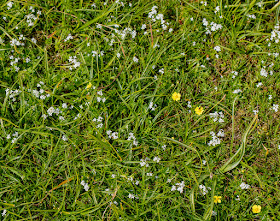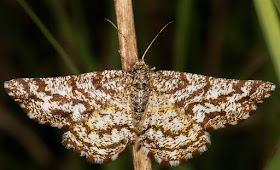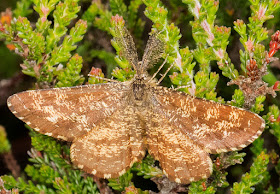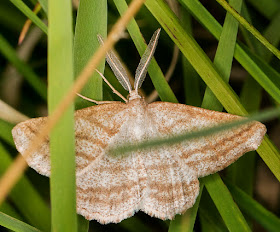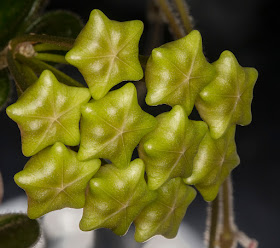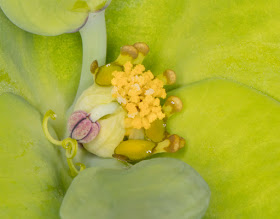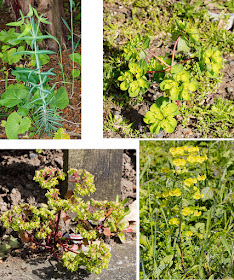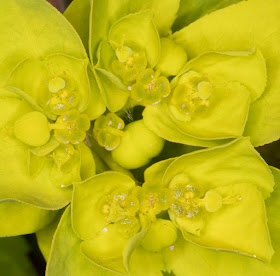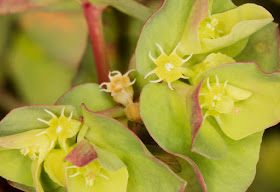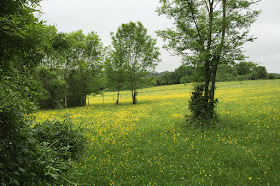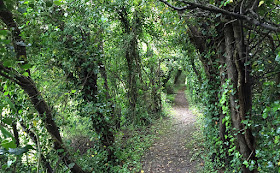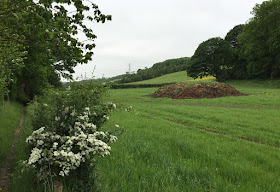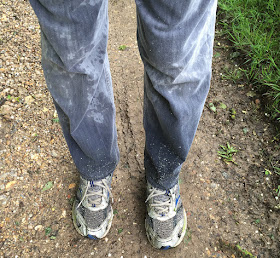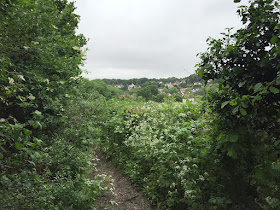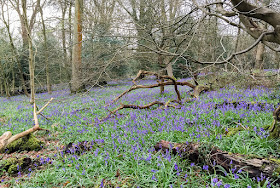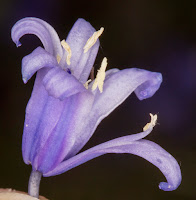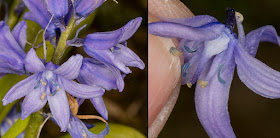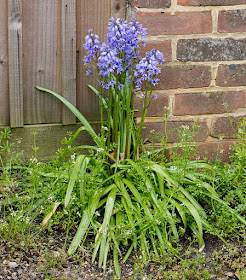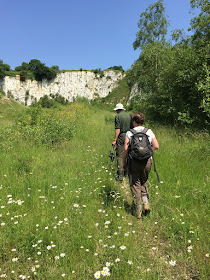 |
| Riddlesdown Quarry, 9 June 2016. |
Walking into
Riddlesdown quarry in summer is a completely different experience from a
winter visit. It is a few years since I had seen it in this season. I was invited to join Andrew, one of the rangers, for a butterfly walk. My aim was to photograph anything interesting, not just butterflies! We did see some of the scarce Small Blues, the main reason for this walk, which I managed not to photograph.
Even before the walk I had taken a couple of shots on a nearby bank. This is Crested Dog's-tail, Cynosurus cristatus. It's a common grass, but very showy.
 |
| Burnet Companion, Euclidia glyphica. Riddlesdown quarry, 9 June 2016. |
Inside the quarry we soon saw lots of these moths, Burnet Companions, common day-fliers in grassland. I was pleased to get a close photo, which I had not managed before.
I saw a couple of spiders ..
 |
| Crab spiders, Misumena vatia. Riddlesdown quarry, 9 June 2016 |
In the middle of this Oxeye Daisy is a crab spider, Misumena vatia. Crab spiders are ambushers. They wait in a flower until an insect comes along, then pounce. This species can change its colour to yellow, but I have only ever seen white ones, whatever colour flower they are on. Of course that might just mean that I have missed some well-camouflaged specimens!
The larger one is a female. The small striped one is a male, which I found wandering around on a different flower.
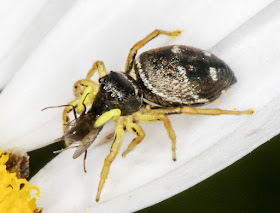 |
| Jumping spider, Heliophanus species, with prey. Riddlesdown quarry, 9 June 2016 |
Jumping spiders creep up on their prey and then jump at them. They are fast. This Heliophanus has what looks like a small fly.
 |
| Brimstone caterpillar, Gonepteryx rhamni, on Common Buckthorn, Rhamnus cathartica. Riddlesdown quarry, 9 June 2016 |
Andrew pointed this out to us. It's the caterpillar of a Brimstone butterfly, lying along the leaf of a small Buckthorn. This and the related Alder Buckthorn are its only food plants. The caterpillars were hard to see until we were right up close to them. Soon afterwards, we watched a female Brimstone lay a single egg on a Buckthorn leaf. That's it inset into this photo.
 |
| Weevil, Tychius schneideri. Riddlesdown quarry, 9 June 2016. |
As well as white Oxeye Daisies, the quarry was full of yellow flowers. All up the slopes were masses of Kidney Vetch, the food plant of the Small Blue butterfly.
We looked inside a few of the flower heads, searching for caterpillars, but didn't find any. It was only a quick look, not a proper investigation. But I did see this little weevil, Tychius schneideri, which is known to favour Kidney Vetch.
There were many yellow-flowered dandelion lookalikes, and the floor of the quarry had a healthy population of Rock Rose.
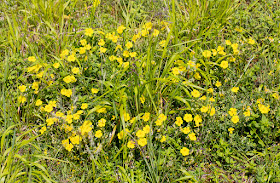 |
| Common Rock-rose, Helianthemum nummularium. Riddlesdown quarry, 9 June 2016. |
And, of course, there were many other things. I have carefully avoided repeating things featured in the previous summertime post linked to at the top.

